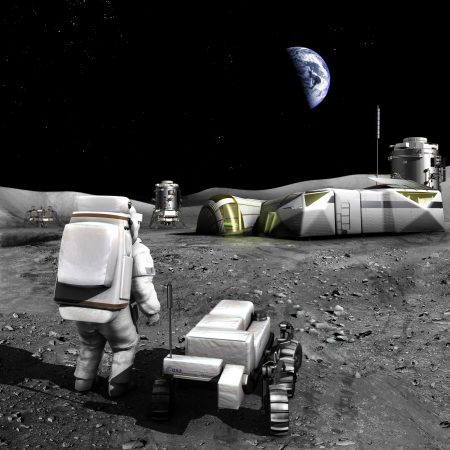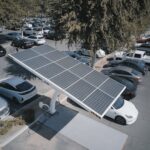December 9, 2017 – NASA in its latest public solicitation is seeking proposals for the design, fabrication, and testing of critical components and subsystems for acquisition and processing of extraterrestrial resources into water (H2O), oxygen (O2), and fuel. The end result is to make space exploration and exploitation sustainable without relying on Earth resources and resupply.
NASA calls this In-Situ Resource Utilization (ISRU) and it is seen as the way forward for humans to become Deep Space inhabitants. It is not that NASA hasn’t been working on ISRU technologies over several decades (see the MOXIE O2 extraction technology that will be tested on the Mars 2020 rover), but rather that the agency sees in commercial partnerships a parallel track to innovation. After all, the agency has invested billions of dollars in the Space Launch System (SLS) a rocket designed to launch large payloads and human-crewed spacecraft into cislunar space and beyond. Meanwhile, NASA has encouraged and significantly funded initiatives by Boeing, SpaceX, Lockheed-Martin, Orbital ATK, Blue Origin, Sierra Nevada, Bigelow Aerospace, Virgin Galactic and others in supporting the International Space Station and low-Earth orbit (LEO) missions.
Whether it is budget constraints or driven by the desire to create a commercial space industry, NASA, through its NextStep initiatives, is creating significant commercial opportunities to make a future for humans in space that is Earth independent.
The current programs, the Evolvable Mars Campaign, the crewed missions to cislunar space in the 2020s, or the crewed missions planned to go to the vicinity of Mars in the 2030s, the common requirement involves harvesting essentials including O2 for breathing, methane (CH4) and hydrogen (H) for propulsion, and H2O, all coming from Deep Space involving resource extraction from asteroids, lunar regolith and Martian materials. ISRU technology projects that NASA wants to encourage, therefore, will include collecting and converting of space resources into products that help reduce large payload launches from Earth.
In the case of Mars, ISRU technology being sought will harvest from the CO2 in Mars’ atmosphere and from Martian icy soils, the H2O and O2 vital to human crews. In addition, any Mars mission will need to extract and store 30 metric tons of O2 and CH4 propellant for a Martian ascent vehicle. To create the 30 tons will require processing 20 tons of CO2 and 16 tons of H2O. And any ISRU technology built for such a mission will need to have multiple redundancies to ensure if something fails there will be sufficient overcapacity.
For the Moon, asteroid and Mars vicinity missions where crews would visit the Martian moons, Phobos and Deimos, the ISRU technology needed will have to extract from regolith an metric ton of O2 annually for life support, H2O in sufficient quantity for life support, and up 14 to 50 tons of O2 and H2 for each mission.
The timetable to create these ISRU technologies is short if NASA is to meet its milestone objectives. Development of critical components will have to be completed within the next three years. Design and testing of these components are scheduled for two years thereafter. Final integration of all of the elements is expected to take another three years. So we are talking about having in place the necessary fully-tested technology by 2025 for the first cislunar missions.
NASA is holding an Industry Forum on December 11, 2017, and has set January 22, 2018, as the deadline for notices of intent from industry partners planning to propose ISRU solutions. Final proposals are due on March 5, 2018. Eligibility requirements are not restricted to U.S. companies, universities or non-profits. Foreign companies and institutions can also file notices of intent to participate.
















